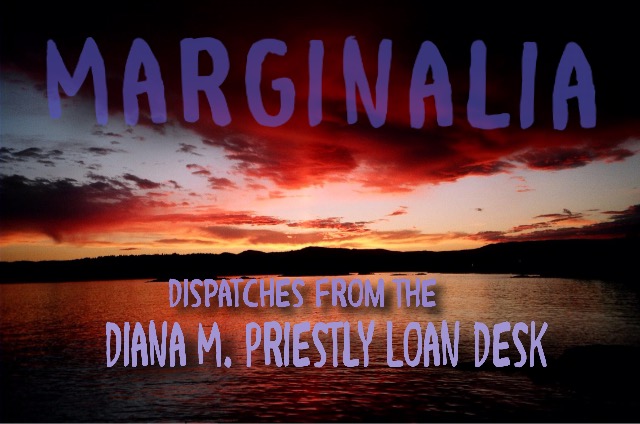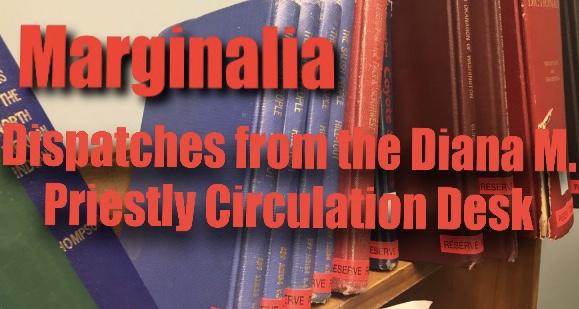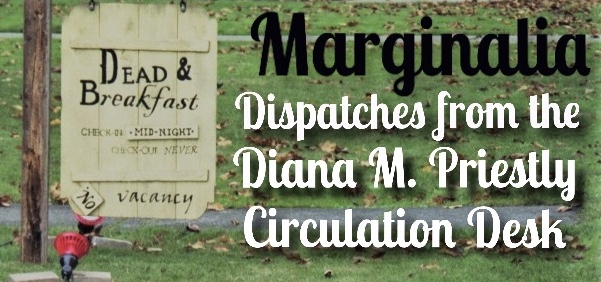Once Upon a Wish
Welcome to Marginalia.
While our stated goal is to keep everyone up to date with the services we provide at the circulation desk, the general idea is to present that information in a light-hearted, but relevant manner.
However, before we go any further the folks here at Marginalia would like to take this opportunity to wish Marisa Lousier the very best of luck with her new job up island. She will be missed.
In the meantime my friends, let’s all gather around the tele-prompter because in this edition of Marginalia, we’re going to tell you a post-pandemic fairy tale.
(Of course, this being a fairy tale, the story itself takes place somewhere in the immemorial mists of time)
It was the only family reunion that I’d been able to attend in person since my daughter’s wedding. More folks than anyone figured on showed up and the guests were spilling out of the house and into a very spacious backyard. When the obligatory greetings and seasonal salutations ran their course I finally met my grandchildren for the first time.
Hope was the oldest and she soon won me over with her lop-sided, gap-toothed smile. She had just turned six and was bored with the never-ending chatter about who did what, why, and when during the pandemic. All in all though, she was glad that it went away because being sick was no fun, and it meant that she could go outside and play with her friends again.
As she was reaching for my hand with hers, Hope told me in no uncertain terms that as her grandfather I was much better off listening to her than all those boring old Covid-19 stories the adults were wasting their time on in the kitchen.
She took her time to tell me a tale about an inquisitive, but quite friendly, unicorn that lived in the forest behind the house; a Cheshire cat that would only appear during the light of a full moon, and the grumpy old toad who ruled the small pond behind the barn with his long, sharp tongue. Once she told me all about her backyard friends, Hope looked up, tilted her head slightly to one side and asked me if I thought they were real. In return I told her about a black and white horse that would visit me when I was younger and how no one believed me either. She wanted to hear more about it, but my daughter interrupted to say that it was getting late. Taking advantage of the occasion, I asked if it would be okay if I read my new best friend a bedtime story.
Hope liked the idea as long as I promised to tell her all about what I did before the ‘flemdemic’ stopped the world because she was really, really tired of hearing about it. In return I agreed, but only if she would draw me a picture of her unicorn in return. She yawned her way around a freckled smile and agreed to my wish.
I told her that I had worked in a law library before I retired. Hope warmed to the idea because libraries had books and, as far as she was concerned, books had stories in them – and Hope was a big fan of books with stories in them. I tried to explain to her that we were an academic library and she probably wouldn’t be interested in the kind of material contained in our collection. She immediately challenged me on the idea, but once I mentioned that our shelves were stocked with books on property law, legal citations, and torts, she quickly changed her mind and wanted to know what anybody did for fun in our library.
I started by telling her about the respite room where folks could take a moment or two to rest if they were not feeling well or were just feeling the stress of life in general. Hope wanted to know what it was that made the room special. So I told her it had an easy chair, a small table to put your stuff on, and an adjustable bed. Much to my dismay as soon as I mentioned the bed Hope scrunched up her face, crossed her arms, and accused me of trying to trick her into going to sleep before she heard the rest of my story.
After assuring Hope that I wasn’t trying to pull a fast one, I told her about an adaptive technology room in the library that helped people to access information thanks to a variety of specially designed software. I described a machine that could convert text to speech for the visually challenged and a similar device that could do exactly the opposite. The room also had a flat-bed scanner which could be used to scan documents, and then transmit the information to an email address. Additionally, one of the computers had a dual screen monitor, while the room itself was equipped with height-adjustable chairs and desks for comfort and easy accessibility.
We also had a number of designated study spaces where law students could participate in online collaborations, client interviews and individual instruction. Hope liked that fact that they were called ‘Zoom’ rooms
I saved the relaxation station for last. Not surprisingly, Hope really, really liked the idea that people could just sit around a table in a library and colour, sketch, or just plain relax with some easy peasy jigsaw puzzles. In a last ditch effort to stay up a little bit longer, she wanted to know what kind of crayons we used, how much scrap paper we had, and if you had to be a certain age or height to use them (a recent trip to the midway left Hope rather unhappy with the carny who told her she was too small to ride the Ferris wheel on her birthday).
She attempted to smother another yawn while telling me that she liked the relaxation station the best because she could spend all her time there drawing and colouring. As her eyes finally fluttered shut I leaned over and gave her a goodnight kiss.
Even though I had left for the airport long before she woke up, Hope had somehow managed to keep her end of the bargain. So you can imagine my surprise once I got home and found a large piece of coloured scrap paper hidden inside my flight bag.
I carefully unfolded what turned out to be a hand drawn picture of the horse from my childhood with the only difference being the number of stripes involved and the horn in the middle of her forehead.
Initially, her picture adorned my fridge door until I thought better of it and purchased a frame. Hope’s artwork now lives in a much more suitable location directly above the fireplace where it never fails to draw extensive praise from everyone who views it.
And with that in mind dear reader we bring our post-pandemic fairy tale to a close, but before we sign off you will be pleased to know that everyone involved lived happily ever after (including the animals).
As for the moral, all I can tell you is that a single wish has the potential to last a lifetime. For proof of this all you would need to do is listen to Hope’s younger siblings as they told the story about the friendly unicorn that lives in their grandfather’s house at each and every family reunion that followed.
The End
Prose: david eugene everard
Art: Acadia
Editorial Advice & Assistance:
Marisa Lousier & Michael Rheault








